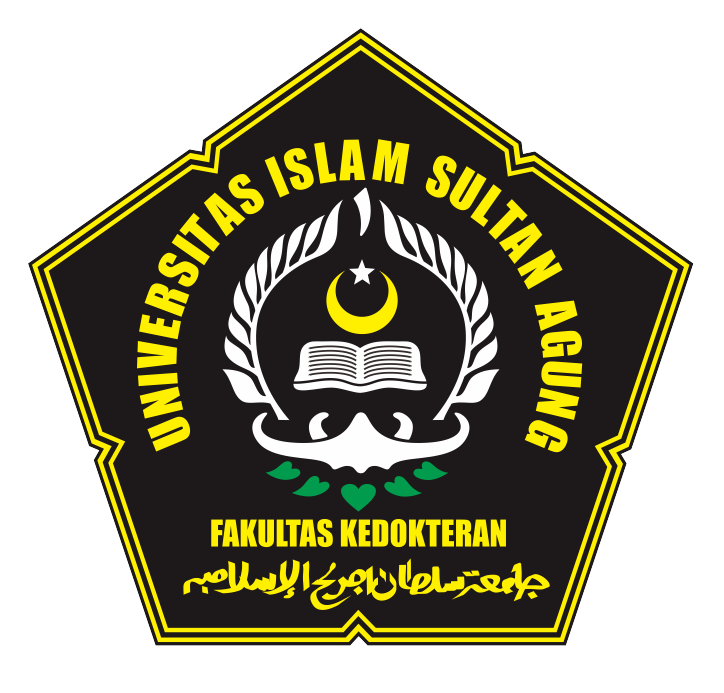Master Program in Biomedicine, Faculty of Medicine, Sultan Agung Islamic University, Semarang - Indonesia
Topical Administration of Aloe vera Extract Gel Increased the Number of Macrophages and Epithelialization in UVB-Induced Sunburn
TOPICAL ADMINISTRATION OF ALOE VERA EXTRACT GEL INCREASED THE NUMBER OF MACROPHAGES AND EPITHELIALIZATION IN UVB-INDUCED SUNBURN
INTRODUCTION: The UVB exposure may cause sunburn (second degree burn). Aloe vera (AV) is widely used in wound healing, including sunburn.
OBJECTIVE: To evaluate the effect of topical Aloe vera extract gel on the number of macrophages and epithelialization in UVB induced sunburn.
METHODS: This posttest only-control group design used twenty female BALB/c mice with UVB-induced sunburn randomly divided into 4 groups. Control groups (Cntrl-G) were given a base gel. Group AV-25, AV-50, and AV-75 were topically treated with Aloe vera gel at the concentration of 25%, 50% and 75% respectively for 5 days. On day 5, after terminated, the samples of skin tissue were prepared for histological study using hematoxlyin eosin (HE) staining. Data were analyzed using one way ANOVA, Post-hoc LSD and Pearson correlation.
RESULTS: ANOVA analysis showed that the number of macrophages and epithelialization among groups was a significantly difference (p <0.05). Post hoc analysis demonstrated that the mean number of macrophage in AV-75 (6.50), AV-50 (5.13), and AV-25 (3.93) were significantly higher compared to that of Cntrl-G (2.93). The mean of epithelialization AV-75% (25.35), AV-50 (18.15), and AV-25 (15.38), were significantly (p <0.05) higher compared to that of Cntrl-G (9.30). The Pearson correlation test indicated that there is a strong positive correlation (0.88) between the number of macrophages and epithelialization (p <0.05).
CONCLUSION: The topical administration of Aloe vera gel extract for five days increased the number of macrophages and epithelialization in sunburned UVB induced sun burn.
Keywords: Sunburn; Aloe vera; macrophages; epithelialization.
- Ambizas, E.M., Maniara, B., 2016. Avoiding Sunburn: All About Sunscreen. Us Pharm. 41, 26–29.
- Barrientos, S., Stojadinovic, O., Golinko, M.S., Brem, H., Canic, M.T., 2008. Growth Factors And Cytokines in Wound Healing. Wound Repair Regen. 16, 585–601. https://doi.org/10.1111/j.1524-475X.2008.00410.x
- Cargnello, M., Roux, P.P., Cargnello, M., Roux, P.P., 2011. Activation and Function of the MAPKs and Their Substrates , the MAPK-Activated Protein Kinases Activation and Function of the MAPKs and Their Substrates , the MAPK-Activated Protein Kinases. Am. Soc. Microbiol. 75, 50–83. https://doi.org/10.1128/MMBR.00031-10
- Cowsert, L.M., 2010. Biological Activities of Acemannan.
- Daburkar, M., Lohar, V., Rathore, A.S., Bhutada, P., Tangadpaliwar, S., 2014. An in vivo and in vitro investigation of the effect of Aloe vera gel ethanolic extract using animal model with diabetic foot ulcer. J. Pharm. Bioallied Sci. 6, 205–212. https://doi.org/10.4103/0975-7406.135248
- Hamman, J.H., 2008. Composition and Applications of Aloe vera Leaf Gel. Molecules 13, 1599–1616. https://doi.org/10.3390/molecules13081599
- Hamza, A.M.A.K.B.S., Coll, M.M.H., Coll, B., 2008. The effect of Aloe vera acetone extract on wound contraction and re-epithelization on full thickness excissional wound in female rabbits. AL-Qadisiya J. Vet Med. 7, 44–49.
- Hashemi, S.A., Madani, S.A., Abediankenari, S., 2015. The Review on Properties of Aloe Vera in Healing of Cutaneous Wounds. Biomed Res. Int.
- Hidayat, T.S.N., 2013. Peran Topical Ekstrak Gel Aloe Vera pada Penyembuhan Luka Bakar Derajat Dalam pada Tikus. Universitas Airlangga.
- Hosseinimehr SJ, Khorasani G, Azadbakht M, Zamani P, Ghasemi M, Ahmadi A, 2010. Effect of aloe cream versus silver sulfadiazine for healing burn wounds in rats. Acta Dermatovenerologica Croat. 1891, 2–7.
- Jettanacheawchankit S, S, S., P, S., Banlunara W, T.P., 2009. Acemannan stimulates gingival fibroblast proliferation; expressions of keratinocyte growth factor-1, vascular endothelial growth factor, and type I collagen; and wound healing. J Pharmacol Sci. 109, 525–31.
- Khorasani, G., Hosseinimehr, S.J., Azadbakht, M., Zamani, A., Mahdavi, M.R., 2009. Aloe Versus Silver Sulfadiazine Creams for Second-Degree Burns : A Randomized Controlled Study. Surg. Today 39, 587–591. https://doi.org/10.1007/s00595-008-3944-y
- Krzyszczyk, P., Schloss, R., Palmer, A., Berthiaume, F., 2018. The Role of Macrophages in Acute and Chronic Wound Healing and Interventions to Promote Pro-wound Healing Phenotypes. Front. Physiol. 9, 419. https://doi.org/10.3389/fphys.2018.00419
- Mahdavian, B., Veer, W.M. Van Der, Egmond, M. Van, Niessen, F.B., Beelen, R.H.J., 2011. Immunobiology Macrophages in skin injury and repair. Immunobiology 216, 753–762. https://doi.org/10.1016/j.imbio.2011.01.001
- Oryan, A., Mohammadalipour, A., Moshiri, Þ.A., Tabandeh, M.R., 2016. Topical Application of Aloe vera Accelerated Wound Healing ,. Ann. Plast. Surg. 77, 37–46. https://doi.org/10.1097/SAP.0000000000000239
- Pastar, I., Stojadinovic, O., Yin, N.C., Ramirez, H., Nusbaum, A.G., Sawaya, A., Patel, S.B., Khalid, L., Isseroff, R.R., Tomic-canic, M., 2014. Epithelialization in Wound Healing : A Comprehensive Review. Adv. Wound Care 3, 445–464. https://doi.org/10.1089/wound.2013.0473
- Rahayu, F., Wiwit Ade FW, Rahayu, W., 2013. Pengaruh pemberian topikal gel lidah buaya (aloe chinensis baker) terhadap reepitelisasi epidermis pada luka sayat kulit mencit (mus musculus). Fak. Kedokt. Univ. Riau.
- Rhodes, L.E., Gledhill, K., Masoodi, M., Haylett, A.K., Brownrigg, M., Thody, A.J., Tobin, D.J., Nicolaou, A., 2009. The Sunburn Respone in Human Skin is Characteristic by Sequential Eucosanoid Profiles that may mediate its early and late phases. FASEB J. 23, 3947–56. https://doi.org/10.1096/fj.09-136077
- Rodero, M.P., Khosrotehrani, K., 2010. Skin wound healing modulation by macrophages. Int J ClinExpPathol 3, 643–653.
- Seeger, M.A., Paller, A.S., 2015. The Roles of Growth Factors in Keratinocyte Migration. Adv. Wound Care 4, 213–224. https://doi.org/10.1089/wound.2014.0540
- Shahzad, M.N., Ahmed, N., 2013. Effectiveness of Aloe Vera gel compared with 1% silver sulphadiazine cream as burn wound dressing in second degree burns. J. Pak. Med. Assoc. 63, 225–230.
- Velnar, T., Bailey, T., Smrkolj, V., 2009. The Wound Healing Process : an Overview of the Cellular and Molecular Mechanisms. J. Int. Med. Res. 37, 1528 – 1542. https://doi.org/10.1177/147323000903700531
 Copyright (c) 2020 Sains Medika: Jurnal Kedokteran dan Kesehatan
Copyright (c) 2020 Sains Medika: Jurnal Kedokteran dan Kesehatan

This work is licensed under a Creative Commons Attribution 4.0 International License.
